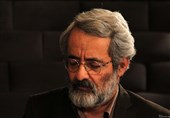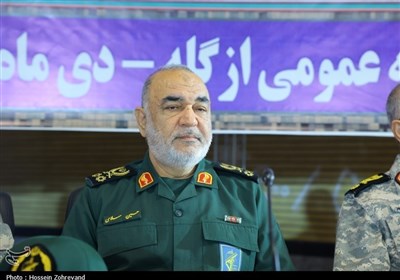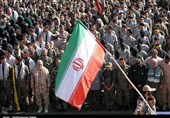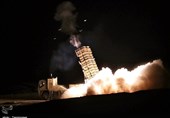An Argument against Ronen Bergman’s 'The Secret War with Iran' – 27
TEHRAN (Tasnim) – For Lebanese and Palestinian refugees, it was clear that the Zionists’ occupation of Lebanon was not an isolated act. Exactly when the issue of occupation of Palestine was under way, the necessity of access to the Litani River was highlighted.
Iranian journalist and expert Abbas Salimi Namin has disproved the claims and opinions of Israeli analyst Ronen Bergman in the book ‘The Secret War with Iran’. ‘The Secret War with Iran’, written by renowned Zionist journalist Ronen Bergman, was published in 2008 by Simon & Schuster publishing company in the United States.
Born in 1972, Bergman is a graduate of Tel Aviv University in the Middle East political relations. He is a famous Zionist journalist and analyst in the military and security fields who has worked with Israeli newspapers ‘Haaretz’ and ‘Yedioth Ahronoth’, American dailies and weeklies such as ‘The New York Times’, ‘Newsweek’, ‘The Wall street Journal’, and British media groups including ‘The Guardian’ and ‘The Times’.
Bergman has been interested in topics relating to the enemies of the Zionist regime (particularly Iran, Hezbollah and the Palestinian resistance groups), as well as subjects on the history of the Israeli regime’s assassination operations, which are cited in his recent book ‘Rise and Kill First’.
In an interview with Persian TV channel ‘Iran International’, Bergman has pointed to the Iranian nuclear program and the issues surrounding it -particularly the Zionist regime’s secret attempts to halt the process of nuclear activities in Iran and assassinate Iranian scientists. He has also cited ex-CIA chief Michael Hayden as saying that the assassination of nuclear scientists is the best way to impede Iran’s growing process in that field, and has implicitly held Israel responsible for it.
In the book ‘The Secret War with Iran’, Bergman has written a history of encounters between Iran and the Zionist regime, while the bulk of the book relates to the Lebanese Hezbollah -Iran’s main ally in the battle against the Zionist regime since its formation until the 33-day War- focusing on the role of Martyr Imad Mughniyeh.
His book also includes sections about the final years of the Pahlavi regime and victory of the Islamic Revolution in Iran, short periods of the war imposed by the Ba’thist party of Iraq on Iran (focusing on the McFarlane affair), Iran’s role in supporting the Palestinian groups, and the Iranian nuclear program.
Bergman’s multiple undocumented and untrue comments as well as personal and purposeful analyses (with the main purpose of displaying Israel’s power, especially in a competition with the US) that have repeatedly come in his book make a critical review of the book necessary for Iranian readers.
Director of the Iran History Studies and Compilation Bureau, Abbas Salimi Namin, has written an extensive criticism in a book about ‘The Secret War with Iran’. Born in 1954, Salimi Namin is an experienced journalist and a renowned Iranian researcher in history and political sciences who has published many articles and books.
About ‘The Secret War with Iran’
Part 27:
Chapter VII
Hostage-taking and abduction in occupied Lebanon is discussed in Chapter 7 titled “The Meat Market”. In this chapter, the author has, instead of offering a narrative, ranted unilaterally without any mentioning of Israel’s acts of abduction. By benefiting from a humane-emotional subject, he has sought to incite public feelings. But this objective has not been achieved due to the author’s failure to provide a descriptive narrative. Rather, the author raises many questions and ambiguities due to selective conduct. For instance, it is not clear why this phenomenon peaked in Lebanon in such short period of time, why there was no clear orientation in this regard in terms of diversity in the nationalities of abductees (East and West blocs) while only Western governments were supportive of the Lebanese occupation, why the abductees were not identified, or why various groups were involved in hostage-taking. Dozens more questions remain unanswered too.
Not only is Mr. Bergman knowingly shunning such questions, but also he refuses to make the slightest reference to the circumstances of an occupied nation and numerous crimes committed against it. For instance, why had those who had adopted resistance inevitably to resort to any tool to pass their objections through the world? Are such methods adopted today in Lebanon, Palestine, Yemen and similar nations? The answer is negative because today, in the face of an invader armed to the teeth and endowed with all-engulfing support from Capitalist governments, the resistance movement has at least media, albeit not very influential, to reflect its demands. It has also limited defense equipment to resist and push back invaders, or change the game in the battlefield, as was the case in Yemen. Yet more significantly than how the resistance movement in Lebanon had to find a way out of the tragic situation and crises was the point that various groups benefited from hostage-taking and abduction. Some of them were the Zionists, Fatah and Amal. How can one reach a precise conclusion without going through the depth of the issue? For that period, Israel claims responsibility at least for the kidnapping of Sheikh Abed Al-Karim Obaid and Mustafa Dirani and their transfer to the occupied territories. It has also admitted indirectly to the kidnapping of Iranian diplomats in Lebanon. When a dominant invader in Lebanon and its local agent, i.e. the Falange movement, resort to such methods despite enjoying carte blanche to reach their objectives, how can Bergman want to incite his readers against Hezbollah? When he at least claims that more than half of abductions was not related to Hezbollah, why does he refuse to provide any information to that effect? “Between late 1982 and June 1986, the peak period for Hezbollah’s hostage operations, ninety-six foreign citizens were abducted in Lebanon…. Thirteen of the ninety-six were murdered. Hezbollah was responsible for fifty-one of the kidnappings. Eight were carried out by the Amal, the more established and more moderate Shiite party and militia, and the others by various groups, including Palestinian ones.” (Chapter 7, p. 121)
Even if we rely on figures provided by the author, readers may find the impression that the book is trying to prevent development of a comprehensive image of that time and space. Why were Palestinians forced to resort to such actions? When international bodies turn a blind eye to the massacre of Palestinian refugees in Lebanon and no action is taken against Israel after committing such big crime, what would be the author’s advice to the families of victims in raising their protest at the crime the author has acknowledged?
“…but Syrian intelligence put paid to the Israeli plan by blowing him up at a meeting at the Phalange headquarters in Beirut. The Phalange response was to massacre hundreds of Palestinians in the Sabra and Shattila refugee camps in southern Beirut. Israel was not an active partner in this atrocity, but its forces also did nothing to prevent or stop it.” (Chapter 4, p. 76)
How come isn’t the author offended over the massacre of “hundreds of Palestinians”? How come he easily claims “Israel was not an active partner in this atrocity”? The author has acknowledged that one objective sought in the occupation of Lebanon was to expel Palestinians. “It was Sharon who conceived of the war plan, behind which lay the idea of a comprehensive change in the Middle East: Israel would conquer southern Lebanon, join up with the Maronites in Beirut, and kick the PLO and the Syrians out. The leader of the Christian Phalange Party, Bashir Jemayel, would be installed as the ruler of Lebanon. Then—Sharon hoped—the expelled Palestinians would take over Jordan, set up their state there replacing King Hussein’s Hashemite monarchy, and give up their dream of establishing it in the West Bank.” (Chapter 4, p. 74)
Therefore, driving Palestinians out of Lebanon was a central objective in Israel’s invasion of Lebanon. How can one imagine that the massacre of “hundreds” of Palestinian refugees (or 3,500 based on Zionists’ data) had been outside Sharon’s scheme to expel Palestinian refugees from their camps in Beirut? The same methodology was used during the occupation of Palestine to drive Palestinians out. Can one cite any crime more horrible than that?
In a bid to play down this atrocious crime having been committed within the framework of the Zionists’ plans, the author writes: “Then—Sharon hoped—the expelled Palestinians would take over Jordan, set up their state there replacing King Hussein’s Hashemite monarchy, and give up their dream of establishing it in the West Bank.” (Chapter 4, p. 74)
This claim is while Zionist-leaning King Hussein had already expelled Palestinian refugees from Jordan violently. That is why in the wake of the carnage of Palestinians in Lebanon, Arafat moved to Tunisia instead of Jordan. Of course it shows that the Zionists recognize no permanent place for the real owners of Palestine in the occupied territories and see US-brokered peace plans as way to win time.
In another book, Bergman refers to the UN General Assembly’s resolution on the mandatory partition of Palestine. “On November 29, 1947, the UN General Assembly voted on the partition of Palestine and formation of an independent Jewish state.” (Rise and Kill First, p. 38)
Although the resolution was adopted under the influence of the Zionist lobby and due to insistence by the UK, the US and other Capitalist governments without any binding merit, besides authorizing European, Asian and African Jews to return to Palestine, Christians, Muslims and non-Zionist Jews and other Palestinian cities were given right. But the second part was never executed and in a bid to eradicate Palestinian citizens, every day a new crime was committed until Palestinian refugees in Lebanon had no option but to accept the new displacement.
Under such circumstances, how could Palestinians tell the world about atrocities committed against them? When all international media had imposed a news blackout on a case of genocide, how could Palestinians speak about their own tragedy and tell the world that under the cover of the Holocaust fabrication, crimes were being committed in Palestine? Regardless of the nationality and the real identity of the hostages, had Palestinians any other option in dealing with the Zionists’ unprecedented acts of violence and their stifling acts? One cannot judge the past based on the present circumstances. Today, Palestinians are able to immediately respond to Israeli acts of aggression and make the aggressor regret its act. At least, cyberspace has created a chance for Palestinians to share their story with the world. That is why even under the present circumstances with no news of abduction and hostage-taking by Palestinian or Lebanese refugees, the Zionists are going ahead with kidnapping foreign nations in their own country or in third countries in a bid to spread fear and intimidation.
For Lebanese and Palestinian refugees, it was clear that the Zionists’ occupation of Lebanon was not an isolated act. Exactly when the issue of occupation of Palestine was under way, the necessity of access to the Litani River was highlighted. To that effect, Frishev Sir Ranan puts it as follows: “As the World Zionist Organization is determined to bring together a large number of Jews on a limited parcel of land, it is then necessary to draw up extensive irrigation projects due to limited water resources in Palestine. Therefore these projects are developed as far away as land lying north and northeast of Palestine to be connected to resources in Jordan, Litani River and Hermoon and Yarmook snow. Apart from that, since the country is poor in coal and oil, industrial projects were focused on power generation that would be fed by Litani and Yarmook.” (Borders of Nation, Frishev Sir Ranan, quoted in Zionist Strategy in Arab Region and Neighboring Countries, p. 50)






